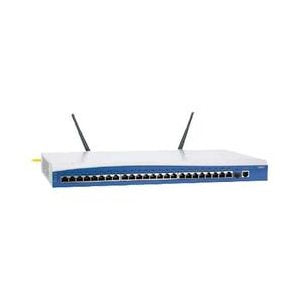Wireless Access Points (WAPs) are enterprise level gear often found in a business networking environment. Contrast this with the ubiquitous Wireless Router, found in everyone’s home. We often receive questions by customers wanting to know the difference between the two, and can they use a router as a WAP or vice versa?
Wireless Access Points (WAP)

Wireless Access Points are considered “dumb.” The WAP often will require a wireless access controller in order to effective use the data it receives and sends. Most often a layer 3 switch or router will handle this for you. For instance, the NetVanta 7100 or NetVanta 1335 is a wireless access controller the the Adtran NetVanta 150 WAP. The need for a wireless access controller to use the WAP is unique to WAPs, and prevents wireless routers from being used as a wireless access point since no access controller supports them.A wireless access point is a network device that runs off of an Ethernet port on your network. The WAP converts signals from the Wi-Fi signal it produces and receives and sends the data through the network switch it is connected to. Wireless access points most often utilize IEEE standardized Wi-Fi. The most common speeds are 802.11b/g or 802.11n.
Wireless Routers
 Wireless routers are most often smaller four port networking devices found in homes. Occasionally larger wireless routers such as the NetVanta 1335 with Wi-Fi are created, but they are rare. As with the NetVanta 1335, most enterprise level routers would support Wi-Fi through access points and they would work as the access controller. Wireless routers work well in small networks where there is no need for multiple pieces of hardware.
Wireless routers are most often smaller four port networking devices found in homes. Occasionally larger wireless routers such as the NetVanta 1335 with Wi-Fi are created, but they are rare. As with the NetVanta 1335, most enterprise level routers would support Wi-Fi through access points and they would work as the access controller. Wireless routers work well in small networks where there is no need for multiple pieces of hardware.
The reasons why a WAP could not be a router are numerous. First, WAPs are dumb devices that do not support layer 3 capabilities, or any switching capabilities for that matter. Second, a WAP will most often have a single Ethernet port, preventing the WAP from even sending a signal from the Wide Area Network (WAN) to the Local Area Network (LAN).
